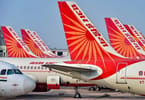KILINOCHCHI – The wreckage left by a brutal war has created a new tourist trail in Sri Lanka just a year after the Tamil Tiger rebels were crushed by government forces.
A giant water tower smashed to the ground is a star attraction for hundreds of people driving through the former war zone where the rebels once had their de facto capital.
Situated along the highway that links the island’s northern Jaffna peninsula to the south, the white cement tower was a prominent landmark in Kilinochchi, but was blown up by the rebels during a battle with army troops.
Such fighting is now a thing of the past after government soldiers seized all territory controlled by the Tigers and wiped out their leadership one year ago this week.
The guerrillas had been fighting for an independent homeland for the island’s minority Tamil population concentrated in the island’s northeast — a decades-long conflict that the UN estimates cost 100,000 lives.
Surrounded by destroyed buildings and army camps, the water tower provides an irresistible backdrop for amateur photographers. It is also covered in graffiti written by the soldiers who marched in last year on their way to victory.
“LTTE (Liberation Tigers of Tamil Eelam) gone forever,” reads one inscription.
A few entrepreneurs have set up makeshift stalls around the tower, selling everything from vegetables, fresh fish, biscuits and soft drinks to sunglasses.
“I make about 500 rupees (four dollars) a day,” says Kilinochchi native N. Seelan, who sells palmyrah-based sweets to tourists.
A few miles further up the highway, past hundreds of bomb-blasted trees, dozens of families from the majority Sinhalese community crowd around the burnt shell of a bulldozer used as a makeshift tank by the rebels.
Armed soldiers act as tour guides at the site, narrating battlefield victories to onlookers who pose for pictures. Children amuse themselves by climbing onto the bulldozer.
Since the main highway re-opened to civilian traffic in December, thousands of visitors have headed to Jaffna, an area that was off-limits during the height of the fighting.
Any location remotely connected to the rebels or military victories is eagerly sought out.
“Nearly everyone travelling from the south takes a photograph in front of the fallen water tower, the bulldozer and vehicle yards with burnt or stolen Tamil Tiger vehicles,” says a soldier running a military food stall.
“People had earlier heard about these things. Now they get to see it for themselves. It is a symbol of pride for Sinhalese people,” said the soldier, who declined to be named.
Just outside Jaffna town, a group of young men stand for pictures at a neglected rebel war cemetery.
The once neatly laid out cemetery garden is now a shrub jungle. Paint is peeling off the gravestones and souvenir hunters have hacked pieces off them.
“These people are mostly tourists from the island’s south,” says K. C. Dharmalingam, 32, who works in a grocery shop near the cemetery. “There is no one to stop them.”
Sri Lanka’s tourism ministry secretary George Michael said the government is not keen to preserve physical reminders of the Tigers’ era, though he admits some sites are good money spinners for locals.
“The thinking is to move beyond the conflict,” Michael said as the government planned this week’s anniversary celebrations of the victory.
In mid-April, the ancestral home of slain Tiger chief Velupillai Prabhakaran was demolished after it became a tourist hotspot.
Situated at the northern edge of the Jaffna peninsula, the house was owned by Prabhakaran’s parents and had been abandoned since his family fled in mid-1990.
M. K. Sivajilingam, a family friend of the Prabhakarans, accused the military of also demolishing another rebel cemetery in Jaffna. “The government are destroying pieces of history, they want to remove any traces of the Tigers,” he says.
Those who have yet to travel the rebel tourist trail can still see some war memorabilia on display at the naval museum in the eastern seaport town of Trincomalee.
Here, crude bombs, weapons and naval craft used by the Tigers are prominently displayed and are a popular visitor attraction.
And just outside the capital of Colombo, the remains of several rebel vehicles damaged during the war are scattered across the gardens of the Sri Lanka Airforce museum.
Amid the lush foliage and lakes is the wreckage of a rebel Czech-built Zlin 143 light aircraft that was shot down on its way to bomb the island’s international airport in February 2009.
“Visitors are enthralled with war-related items. The war has just ended and they want to capture some action moments, even if it is in a museum,” said airforce chief Roshan Goonetilake.
WHAT TO TAKE AWAY FROM THIS ARTICLE:
- A few miles further up the highway, past hundreds of bomb-blasted trees, dozens of families from the majority Sinhalese community crowd around the burnt shell of a bulldozer used as a makeshift tank by the rebels.
- Situated along the highway that links the island’s northern Jaffna peninsula to the south, the white cement tower was a prominent landmark in Kilinochchi, but was blown up by the rebels during a battle with army troops.
- A giant water tower smashed to the ground is a star attraction for hundreds of people driving through the former war zone where the rebels once had their de facto capital.






















